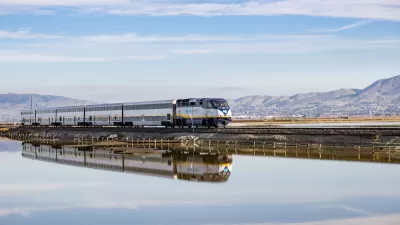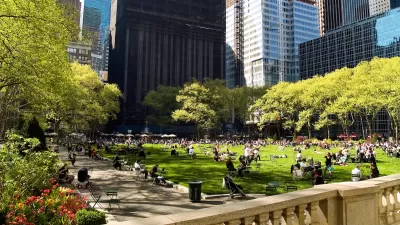With Americans driving less for the first time ever, its time to create a new comprehensive plan for transportation in the United States.
"Our nation spends hundreds of billions of dollars a year on highways, bridges, rail lines, buses and railroads that connect communities, shape patterns of growth and development, and sustain the economy. But there is no comprehensive national transportation policy to drive this titanic task.
Given the energy and environmental challenges of this new century, such an uncharted course is shortsighted, wasteful and practically suicidal.
Developing new transportation policies for the new century will take the kind of commitment and vision that, more than 50 years ago, assembled the interstate highway system. Like President Dwight D. Eisenhower, the next president must harness the national will to meet critical new transportation needs centered in America's cities.
The deadly collapse last year of a four-lane bridge over the Mississippi River in Minneapolis put a glaring spotlight on the nation's aging highways and bridges, and the need for a plan and commitment to rebuild them."
FULL STORY: Map a new plan for transportation

Manufactured Crisis: Losing the Nation’s Largest Source of Unsubsidized Affordable Housing
Manufactured housing communities have long been an affordable housing option for millions of people living in the U.S., but that affordability is disappearing rapidly. How did we get here?

Americans May Be Stuck — But Why?
Americans are moving a lot less than they once did, and that is a problem. While Yoni Applebaum, in his highly-publicized article Stuck, gets the reasons badly wrong, it's still important to ask: why are we moving so much less than before?

Research Shows More Roads = More Driving
A national study shows, once again, that increasing road supply induces additional vehicle travel, particularly over the long run.

Judge Halts Enforcement of Anti-Homeless Laws in Grants Pass
The Oregon city will be barred from enforcing two ordinances that prosecute unhoused residents until it increases capacity and accessibility at designated camping sites.

Advancing Sustainability in Los Angeles County Schools
The Los Angeles County Office of Education’s Green Schools Symposium brings together educators, students, and experts to advance sustainability in schools through innovative design, climate resilience strategies, and collaborative learning.

Using Old Oil and Gas Wells for Green Energy Storage
Penn State researchers have found that repurposing abandoned oil and gas wells for geothermal-assisted compressed-air energy storage can boost efficiency, reduce environmental risks, and support clean energy and job transitions.
Urban Design for Planners 1: Software Tools
This six-course series explores essential urban design concepts using open source software and equips planners with the tools they need to participate fully in the urban design process.
Planning for Universal Design
Learn the tools for implementing Universal Design in planning regulations.
City of Moreno Valley
Institute for Housing and Urban Development Studies (IHS)
City of Grandview
Harvard GSD Executive Education
NYU Wagner Graduate School of Public Service
City of Cambridge, Maryland
Newport County Development Council: Connect Greater Newport





























